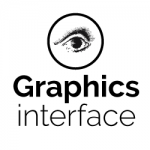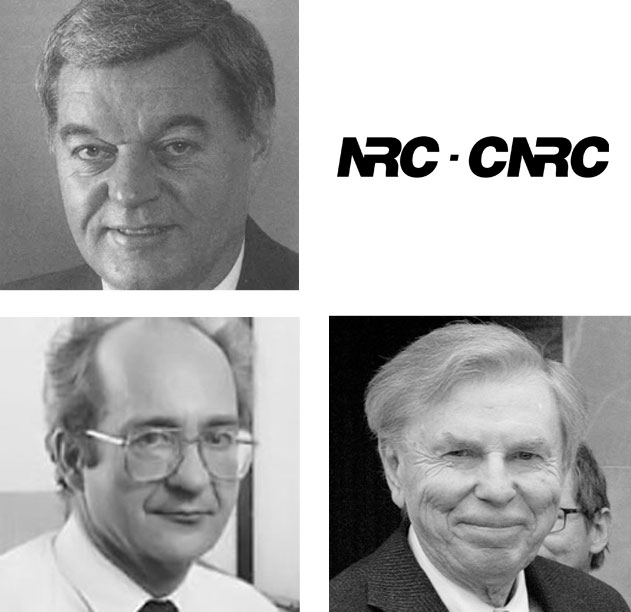Nestor Burtnyk, Ken Pulfer, and Marceli Wein were scientists and engineers and Canadian Digital Media Pioneers. Their work in computer music and animation in the early 1970’s at the National Research Council of Canada in Ottawa was extremely important in the field of human-computer interaction – not just for music and animation. They and the team they led during the initial decades of the digital media revolution played a fundamental role in establishing Canada as innovators in the exploitation of computer technology in the creative and cultural communities.
The early system that was developed for music composition that had been initiated by Pulfer had many of the features that are standard today in an industry that has largely moved into the digital domain. But in those days most of the electronics were analog, so there had to be special effort made to cross the divide between digital and analog. And there had to also be a way to cross the even bigger divide between numeric and alphabetic keyboard entry of data to the computer and the type of fluid interaction that musicians and artists were used to that had evolved over centuries to match the capabilities of the human sensorimotor system.
Under the leadership of Burtnyk, the team encountered similar challenges when developing a system for computer-assisted animation, which was used by Peter Foldes to create the landmark film La Faim/Hunger (1974) that won the Prix du jury du court métrage at the Cannes Film Festival and received a nomination for an Oscar in the same year. This work was done in collaboration with the National Film Board of Canada, an historical pairing of two world class Canadian institutions that together blazed a trail that many others later followed. The system was subsequently reimplemented for use at the NFB in the French Animation Studio.
The NRC music system supported up to four voices, each with its own composer-specified timbre. Multiple monitors allowed a composer to work on one of the melodic lines while viewing a color-coded visualization of all four voices on a second monitor. A professional half-inch Ampex four-track audio tape recorder under computer control recorded the music as it was digitally synthesized in real time. An organ keyboard had been converted for use as an input device to match the needs of professional musicians. The system relied heavily on bimanual input, something that many applications today still struggle to support. It included both a mouse and a special-purpose chording keyboard modeled after the earlier work by Engelbart and English. Like the original SRI mouse, the outer case for the NRC mouse was made of wood. There were also large “thumb wheels” that could be used to scroll through a composition and to adjust the pitch.
The NRC animation system employed many of these same techniques and devices, but it was used to create key frame animation, the dominant approach used to produce commercial animated features, but this time with interactive support for the visual tasks that animators traditionally did with pencil and paper. As with the music system, the animation system was designed from the ground up with technologically naive, but domain expert users in mind. Long before it become standard practice to work closely with users from the outset, the NRC team relied on the constant involvement of expert users throughout the system development process.
Both systems were part of a larger agenda in the Electrical Engineering Division of the National Research Council to study human-computer interaction. A key insight was Pulfer’s observation that to do this effectively it was important to work with users in a rich and potent application domain and that music, and animation, were perfect candidates because musicians and animators had specialized skills, they were highly creative, and what they did could be generalized to other professions because many of the fundamental issues in interaction design cross disciplinary boundaries.
Later work by Burtnyk and Wein looked at other aspects of human-computer interaction, including interaction techniques for specifying 3D parameters using 2D devices that mapped 2D user movement to 3D parameter spaces, including the first implementation of a “virtual trackball” using a pen-based tablet, something that is now a part of the standard toolkit for anyone developing apps on smartphones or other devices that support gestural input.
Burtnyk, Pulfer, and Wein also helped establish the Canadian Man-Computer Communications Society (later renamed the Canadian Human Computer Communications Society) to support a biennial conference on computer graphics first held at the NRC in 1969. The conference became the annual Graphics Interface (GI) conference in 1982, making it the longest-running regularly-scheduled conference on computer graphics and human-computer interaction.
Many young Canadians who went on to make significant contributions to digital media in the fields of computer music, computer animation, and human-computer interaction got their start in the NRC laboratory that Burtnyk, Pulfer, and Wein created and nurtured. Many of them were co-op students who gained access to the lab to work on projects that used the unique resources that were developed by these three digital pioneers and the team that they built at NRC in the 1970s and 1980s. In 1969 they launched a biennial computer graphics conference, held at NRC, that had subsequently became the annual Graphics Interface conference and they helped start the Canadian Man-Machine Communications Society (later renamed the Canadian Human Computer Communications Society) to sponsor the conference. It is for their outstanding leadership as government scientists and their visionary anticipation of the importance of digital media that Nestor Burtnyk, Ken Pulfer, and Marceli Wein are recognized as a Canadian Digital Media Pioneers.
Biographies
Nestor Burtnyk joined the Radio and Electrical Engineering Division of the National Research Council (NRC) in 1950 following graduation from University of Manitoba with a BSc in Electrical Engineering. His initial work involved the development of high-frequency radio direction-finding equipment and synthetic wide aperture antennas and related studies in ionospheric propagation. In 1975 he became head of the Computer Graphics Section, then in 1980 he managed the newly formed Computer Technology Research Program where he initiated activities in intelligent robotics, and from 1982 to 1990 he served as the head of the Computing Technology Section where he worked on sensory processing and real-time computing for robotics. Nestor was awarded the Canadian Human Computer Communications Society achievement award in 1996 for his contributions to the field of computer graphics, especially his work on key frame animation and the partnership with the NFB, the CBC, and the BBC, and his early involvement in establishing the Canadian Man-Machine Communications conferences.
Ken Pulfer was born in Winnipeg and received a BSc with a gold medal in 1953 and then an MSc in 1955, both in Electrical Engineering from the University of Manitoba. Upon graduation, he joined the National Research Council, Radio and Electrical Division as research officer. During his early career years he had been involved in a number of research and development projects linked with national defense in microwaves, radar, antennas and solid-state electronics. He later extended his interest to the field of man-machine communications. In 1972, he became an active chief of the Computation Centre at the National Research Council with an overall responsibility for all aspects of scientific computing, from investigations of efficiency and performance of large time sharing machines, to contributions to long term NRC policies in the scientific computing field. After a secondment to Treasury Board Secretariat he returned to NRC in 1975 as Director of the Electrical Engineering Division where he reoriented the divisional efforts towards the solution of long term problems of national concern with particular emphasis on transfer of technology from laboratory to industry. In 1979 he became Executive Director of inter-laboratory programs, in 1981 he became Vice President of Laboratories, and in 1983 he was appointed Senior Vice President of NRC. In 1984 the University of Manitoba awarded him the degree of Doctor of Science, honoris causa. Ken passed away in 2013.
Marceli Wein was born in Cracow, Poland, and immigrated to Canada in 1952. He received his post-secondary education at McGill University, Montreal, Quebec, graduating first with a BEng in Engineering Physics in 1958, followed by an MEng (1961) and a PhD (1964) in Physics. His dissertation topic was an analog system for processing, scanning, imaging, and transmission of weather radar maps. This research in CRT displays and photography of CRT displays stimulated his interest in computer graphics. He worked for Canadian Marconi in Montreal, before joining the National Research Council in 1965. He was active in the International Standards Organization in areas related to computer graphics and he served as a mentor and role model for many of the academics who developed computer graphics and HCI research laboratories at Canadian universities. Marceli was awarded the inaugural Canadian Human Computer Communications Society achievement award in 1990 for his contributions to the field of computer graphics for helping to organize the first Canadian Man-Computer Communications Conference in Ottawa.
Burtnyk and Wein received an Academy Award for technical achievement in 1997 for their “pioneering work in the development of software techniques for computer assisted key framing for character animation.”
Selected Works
N. Burtnyk and M. Wein (1975). Computer animation of free form images. In Proceedings of the 2nd annual conference on Computer graphics and interactive techniques (SIGGRAPH ’75). ACM, New York, NY, USA, 78-80. Link
N. Burtnyk and M. Wein (1976). Interactive skeleton techniques for enhancing motion dynamics in key frame animation. Commun. ACM 19, 10 (October), 564-569. Link
Kenneth B. Evans, Peter P. Tanner, and Marceli Wein (1981). Tablet-based valuators that provide one, two, or three degrees of freedom. In Proceedings of the 8th annual conference on Computer graphics and interactive techniques (SIGGRAPH ’81). ACM, New York, NY, USA, 91-97. Link
Pulfer, K. (1971). Man-machine interaction in creative applications. International Journal of Man-Machine Studies. Volume 3, Issue 1 (January), Pages 1–11. Link
M. Wein, P. Tanner, G. Bechthold, and N. Burtnyk (1978). Hidden line removal for vector graphics. In Proceedings of the 5th annual conference on Computer graphics and interactive techniques (SIGGRAPH ’78). ACM, New York, NY, USA, 173-180. Link
More on NRC’s innovations in digital media.






 (Clockwise from top) Nestor Burtnyk, Ken Pulfer, and Marceli Wein
(Clockwise from top) Nestor Burtnyk, Ken Pulfer, and Marceli Wein